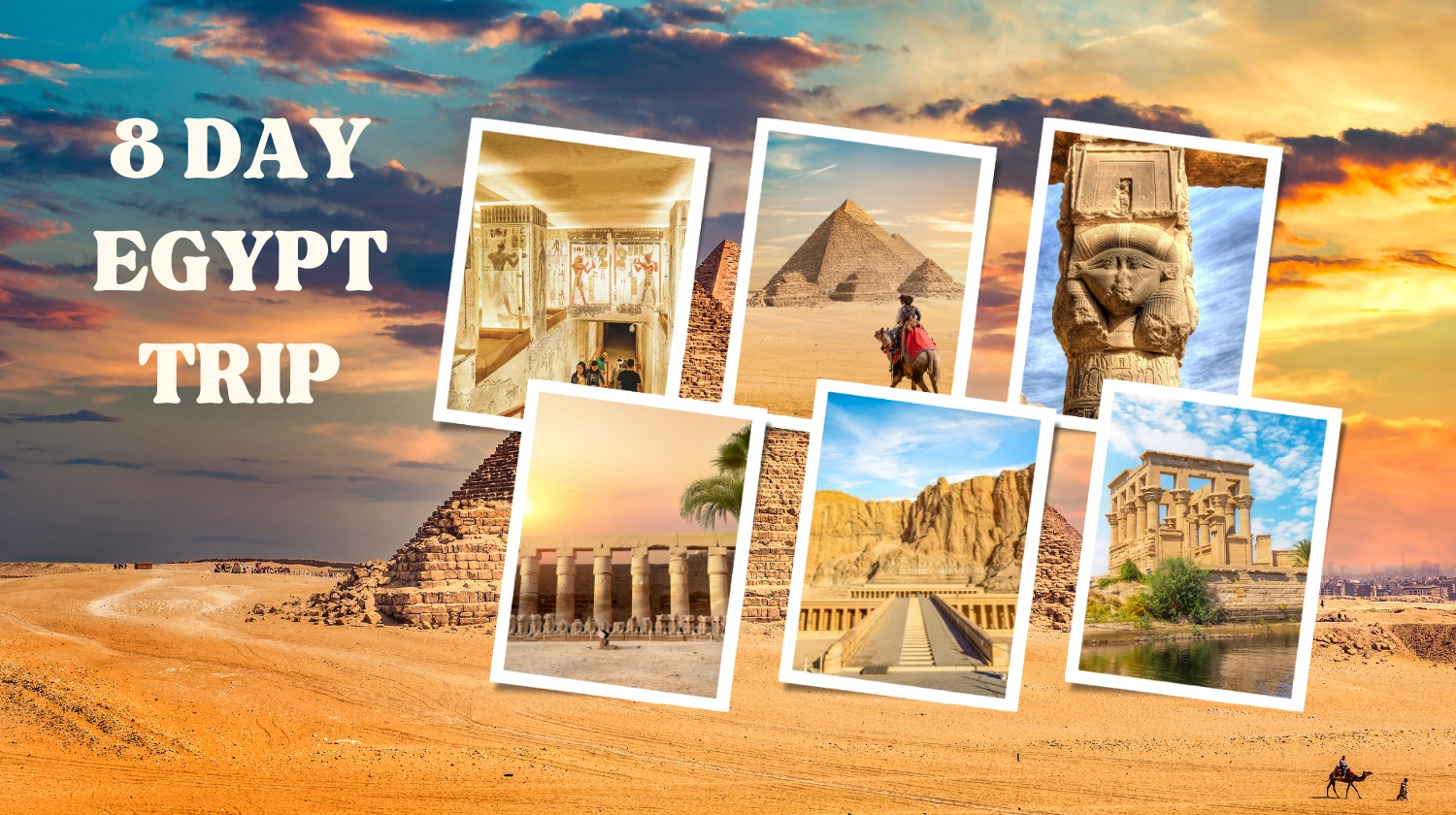Blogs
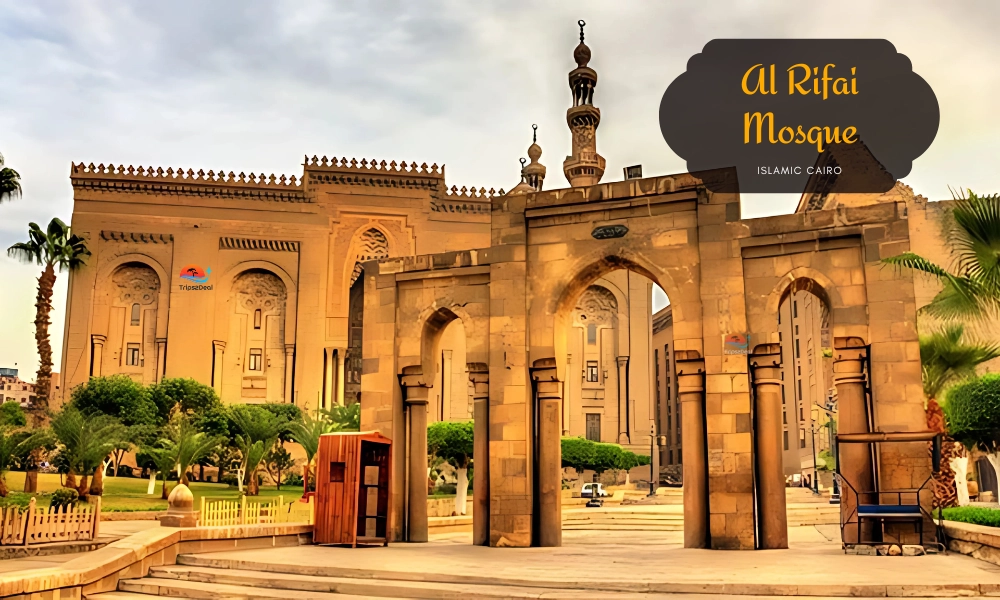
Al Rifai Mosque
To find Al Rifai Mosque, you just have to keep walking through the heart of Islamic Cairo. There, this magnificent Mosque must be standing. Opposite it, the great Sultan Hassan Mosque of the 19th century is located while representing a royal mausoleum, cultural landmark, and an architectural marvel.
- Location: It is located near the Cairo Citadel and right next to Sultan Hassan Mosque.
- Importance: It holds great significance in Islamic Cario Mosques. Well-known for combining tradition and modernity at the same time.
Let's explore this guide and get to know the mosque better. It includes its great history, architecture, royal tombs, and spiritual importance. Basically, the reason it is called the real symbol of Egyptian royalty and faith.
Table of Contents
- 1. Historical Background of Al Rifai Mosque
- 2. How was it designed and constructed?
- 3. Interior and Exterior Highlights:
- 4. Royal Mausoleum :
- 5. The Role of Al Rifai Mosque Through the Ages
- 6. Al Rifai Mosque in Modern Islamic Cairo
- 7. A Pillar of Heritage Tourism
- 8. The Importance of Al Rifai Mosque Globally
- 9. Interesting Facts and Lesser-Known Stories
- 10. Visiting Al Rifai Mosque Today
- Conclusion:
1. Historical Background of Al Rifai Mosque
The Origin and Patronage
In 1896, Koshiar Hanim, the mother of Khedive Ismail, commissioned the Al Rifai Mosque. She wanted to honor Sheikh Ali al-Rifai, a revered Sufi saint. This was her vision while creating the royal mosque and mausoleum for Egypt’s rulers.
Historical Importance in 19th-Century Egypt:
During the late 19th century, Khedive Ismail was modernizing Egypt. European-style boulevards and monumental projects were being introduced to Cairo. Moreover, as a result of this transformation, a perfect masterpiece was born - Al Rofao Mosque.
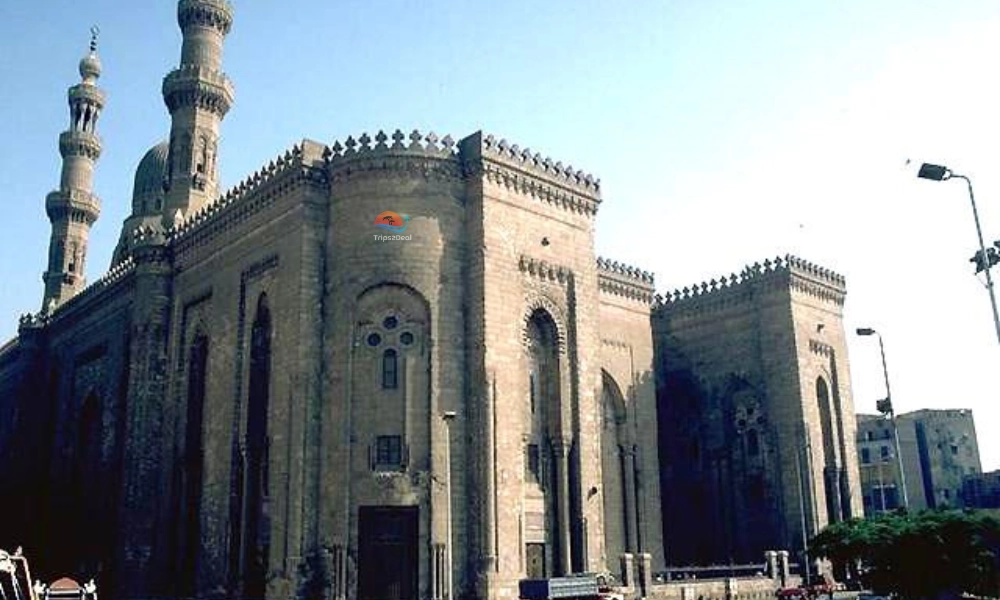
What is its Connection to the Sultan Hassan Mosque?
In order to represent the dialogue between Mamluk heritage and modern revivalist architecture, the Al Rifai Mosque was built opposite the Sultan Hassan Mosque, which was built in the 14th century. This combination of the 14th and 19th centuries perfectly shows the architectural pair in Islamic Cairo.
Symbol of Power, Faith, and Legacy
Al Rifai Mosque is not only a building, but it is a statement of Egypt’s identity. In the 19th century, when Egypt decided to modernize, it showed:
- Power: As the resting place of kings, queens, and even foreign shahs, it symbolizes political authority.
- Faith: Muslims come and pray here while expressing their depths of faith. It is still serving Cairo’s Muslim community with great significance.
- Legacy: It combines the legacy of both Sultan Hassan and modern Egypt. People see it as the continuity of traditions.
If you stand inside it, then you can feel the Islamic Cairo's History. The one that made the legacies, royalty, and courage. It constantly tells the world that Egypt knows how to value history while still evolving with time.
2. How was it designed and constructed?
- Architect: It was designed by Hussein Fahmy Pasha, later continued by Max Herz, a Hungarian architect who specialized in Islamic architecture.
- Design Inspiration: It is the Mamluk style revival, yet influenced by European neoclassical elements.
- Construction Timeline: In 1869, it began and halted several times due to political and financial challenges, and was finally completed in 1912.
- Materials & Techniques: Its materials include White marble, ornate stone carvings, mashrabiya woodwork, and ironwork - combining local craftsmanship with modern tools.
The result: Hence, A majestic blend of past and present, symbolizing Egypt’s dual identity during modernization.
3. Interior and Exterior Highlights:
Walking inside Al Rifai Mosque feels like stepping into a palace of faith.
- Exterior: Monumental façade, huge arched entrance, twin minarets, and finely detailed marble walls.
- Interior:
- Domes & Arches: Grand vaults and ceilings decorated with geometric Islamic motifs.
- Mihrab & Minbar: Lavishly designed with polished marble and gilded wood.
- The Tomb Chambers: They consist of ornately designed rooms that further blend Mamluk tradition with royal symbolism.
- Mashrabiya Screens: This mosque is built with classic Islamic wooden latticework that gives the image of privacy and elegance at the same time.
That's why we say this mosque is the perfect reflection of both spiritual reverence and royal magnificence.
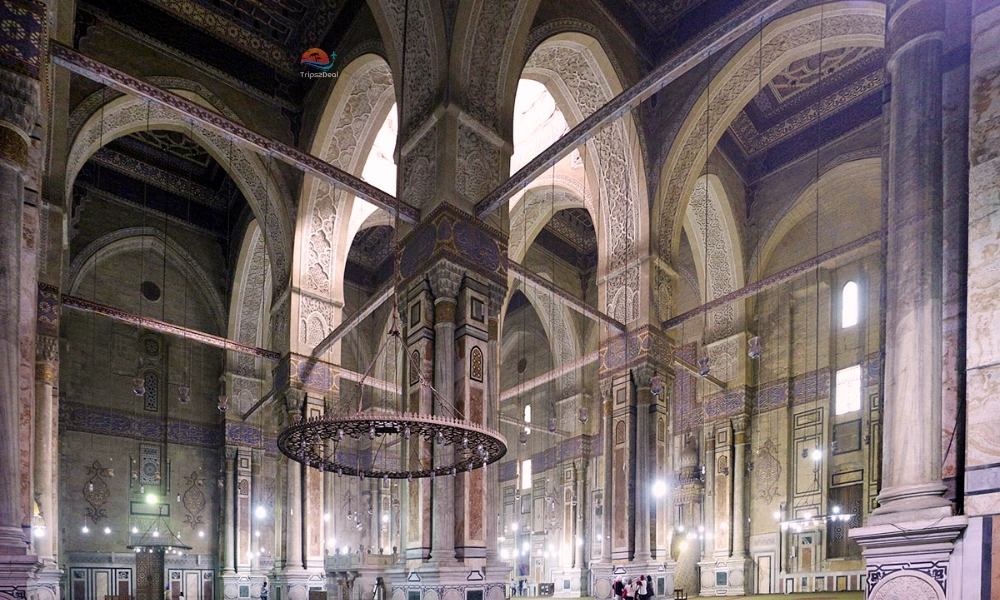
4. Royal Mausoleum :
Do you know that one of the most unique aspects of Al Rifai Mosque is its role as a royal mausoleum?
- These are the Egyptian Royalty who are Buried Here:
- Khedive Ismail
- King Fuad I
- King Farouk (the last king of Egypt, died in 1965)
- The Foreign Royals who are buried here
- Shah Mohammad Reza Pahlavi of Iran, exiled after the 1979 Iranian Revolution, rests here.
Additionally, these tombs make Al Rifai not just a mosque, but also a political and historical monument reflecting Egypt’s royal and diplomatic ties.
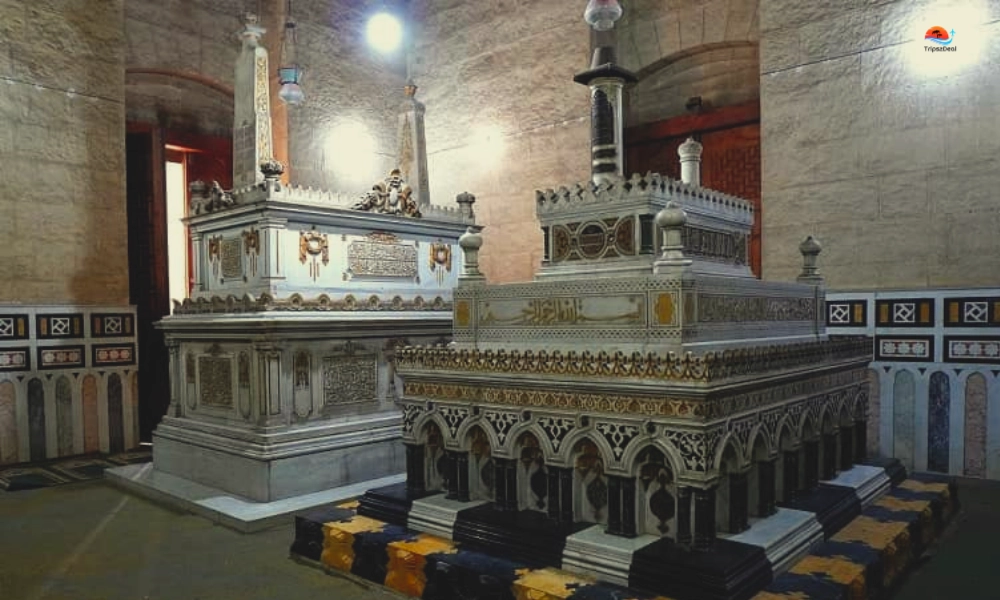
5. The Role of Al Rifai Mosque Through the Ages
- 20th Century: It was a site of national pride during Egypt’s monarchy.
- Political Role: People hosted funerals of kings and dignitaries, symbolizing continuity of power.
- Restoration Efforts: Also, the mosque has undergone government-led preservation projects to maintain its marble, carvings, and delicate interiors.
Not only that, despite all wars, revolutions, and political changes, Al Rifai Mosque has remained a constant guardian of Cairo’s Islamic identity.
6. Al Rifai Mosque in Modern Islamic Cairo
The Al Rifai Mosque is the perfect blend of Islamic heritage and cultural landmark in today’s bustling Cairo. Its walls and architecture reflect early royalties and Islamic heritage. That's why this mosque is continuing to thrive. Not only that, muslims and tourists don’t just see it as a prayer place but a place that shows tradition, faith, and modern life.
Spiritual Role in Contemporary Cairo
Al Rifai Mosque is an active center of worship, deeply woven into the city’s religious fabric:
- Friday Prayers: Every week, hundreds gather for the khutbah (sermon) and prayer, filling its vast courtyards.
- Ramadan Gatherings: During the holy month, everyone gathered here and hosted taraweeh prayers.
- Sufi Honor: Sheikh Ali al-Rifai was a well-reputed man. Due to his tomb, here many visitors come and honor his legacy.
This blend of worship and remembrance keeps the mosque alive as more than a tourist site - it remains a heart of devotion for local Muslims.
7. A Pillar of Heritage Tourism
It is in the heart of Cairo, which is why it gets the most visitors. Gradually, it i becoming one of the most visited places on the Islamic Cairo heritage trail. Many travelers, photographers, and historians come and feel the aroma of faith. It is quite commendable in today’s world:
- The Mosque of Sultan Hassan: The Al Rifai Mosque is located directly opposite, which makes it one of the most iconic Islamic architectural pairings in the world.
- The Cairo Citadel: If you take a short walk away, you will get panoramic views of the city.
- Islamic Cairo Museums & Bazaars: Also, from the Gayer-Anderson Museum to Khan el-Khalili, visitors can explore Cairo’s vibrant history and culture nearby.
Therefore, by remaining both a living mosque and a tourist destination, Al Rifai ensures that Cairo’s royal and Islamic legacy continues to inspire visitors from around the world.
8. The Importance of Al Rifai Mosque Globally
You need to understand that Al Rifai Mosque has not remained hidden within Cairo’s walls - it has captured the imagination of the world:
- It has already been featured in documentaries and travel series exploring Islamic Cairo’s architecture.
- It got highlighted in National Geographic photography spreads, showcasing its golden light and carved marble.
- Academically, it is a research setting on Egypt’s modernization, bridging Islamic and European styles.
- Travelers frequently mention it in travel blogs and heritage websites as well, drawing global visitors eager to experience its blend of spirituality and royalty.
It holds great importance globally. One of the main reasons is its dual identity.
9. Interesting Facts and Lesser-Known Stories
If you walk through Al Rifai Mosque, you may notice more than its grand domes and marble halls. Beyond the architectural magnificence lie fascinating stories. Here are some of them:
- Twin Mosque Concept - The Al Rifai and Suktan Hassan mosque is known as the twin mosques. They were deliberately built opposite each other, symbolizing continuity between medieval and modern Cairo. Locals sometimes call them the “two sisters.”
- A Mosque and a Palace - Not only that, many visitors are surprised to learn that Al Rifai also functions as a royal mausoleum, blending sacred prayer space with dynastic tombs.
- Whispers of Royalty - Egyptians often share anecdotes about seeing members of the Muhammad Ali dynasty attending Friday prayers here, mingling quietly among ordinary worshippers.
These are not just stories, but they breathe life into the mosque, making it not just a monument, but a living archive of Cairo’s heritage.
10. Visiting Al Rifai Mosque Today
If you’re planning to explore Islamic Cairo, here’s what you need to know:
- Location: Go to Midan al-Qala’a, opposite Sultan Hassan Mosque, and you’ll find it there.
- Visiting Hours: The visiting hours usually open from morning until late afternoon.
- Entry Fees: Modest ticket price for tourists, free for worshippers.
- Dress Code: Modest clothing is required (long trousers, women should cover their hair).
- Best Time to Visit: Early morning for photography, Fridays for the prayer atmosphere.
- Important Tips: When you go there, it is very important to respect ongoing prayers, avoid flash photography, and explore both Al Rifai and Sultan Hassan together.
Conclusion:
We cannot say that this mosque is just a monument. Rather, it is far more than that - a history of centuries of prayer and a legacy of royalty. Not only that, Al Rifai Mosque is still alive, unlike other mosques that have become museums.
Its unique strength of combining worlds makes it much magnificent:
- History and Today: Its position near the Sultan Hassan Mosque shows the blend of Islamic heritage and today’s modernity.
- The Sacred and the Royal: While its walls represent the spiritual sanctity, its grandeur consists of royal tombs.
- Egypt and the World: Al Rifai Mosque is a place that goes beyond borders with its significance. Including all from Egyptian kings to the last Shah of Iran.
When you visit it, you not only admire the architecture but also relish the nostalgia of Cairo. It tells you stories about faith, history, and the legacies.
This is the main reason visiting Al Rifai Mosque should be on your list at all costs.




